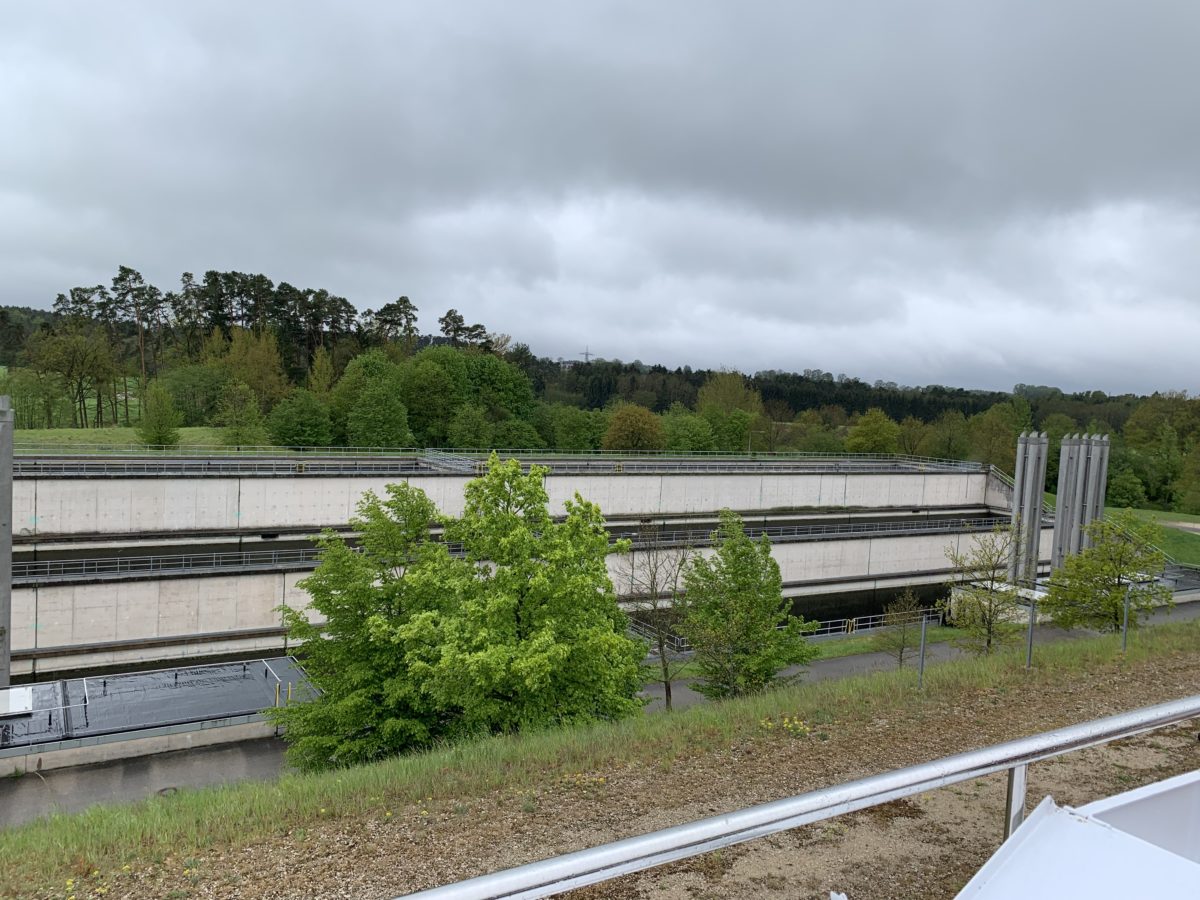Today we went up over the highest point of the Main-Danube Canal, which joins the Main and Danube rivers. Some of the locks are huge: there are 3 that lift boats 25 metres and there are 16 in the canal that lift boats nearly 200m then lower them about 70m as you travel north to south over the continental divide. 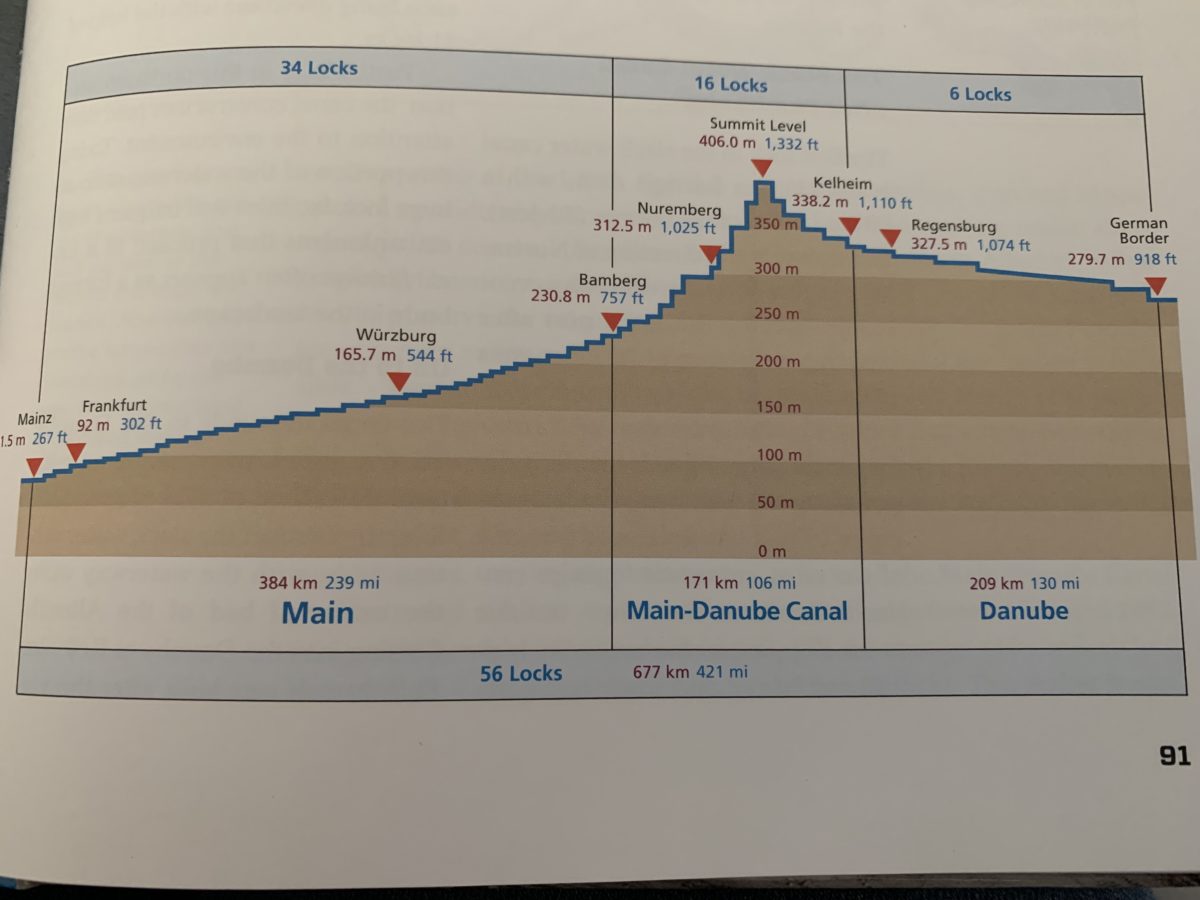 Essentially the canal takes boats up over a mountain range to join rivers that are flowing in opposite directions (hence the continental divide, to signal the difference in watershed between the rivers in Europe that flow towards the Black Sea, eg. the Danube, and those that flow to the North Sea eg the Rhine, or into the Mediterranean).
Essentially the canal takes boats up over a mountain range to join rivers that are flowing in opposite directions (hence the continental divide, to signal the difference in watershed between the rivers in Europe that flow towards the Black Sea, eg. the Danube, and those that flow to the North Sea eg the Rhine, or into the Mediterranean). 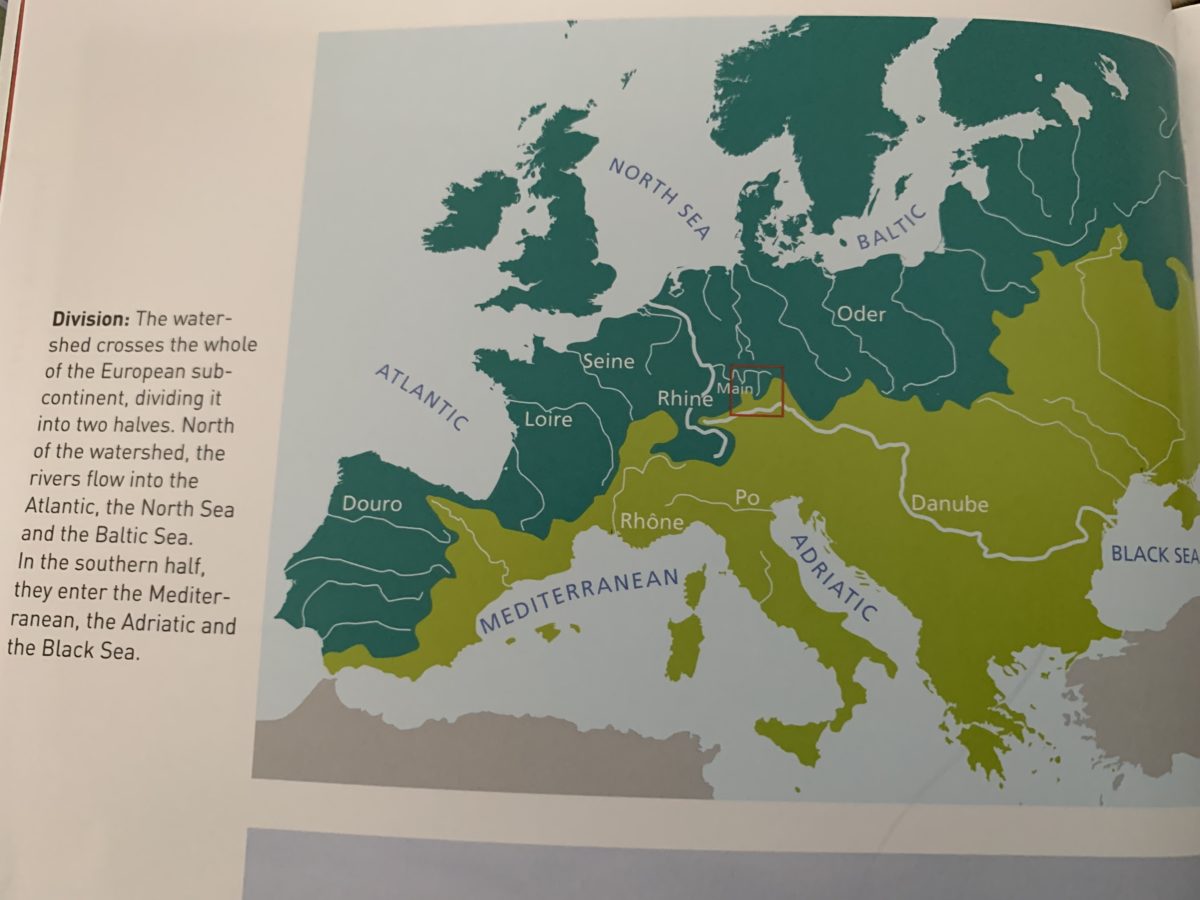
The Main is a tributary of the Rhine and is west of the Continental Divide. 
The locks have gates that either go up or down rather than pushing outwards and they only take one of the cruise boats at a time. It’s like being in a concrete bunker. 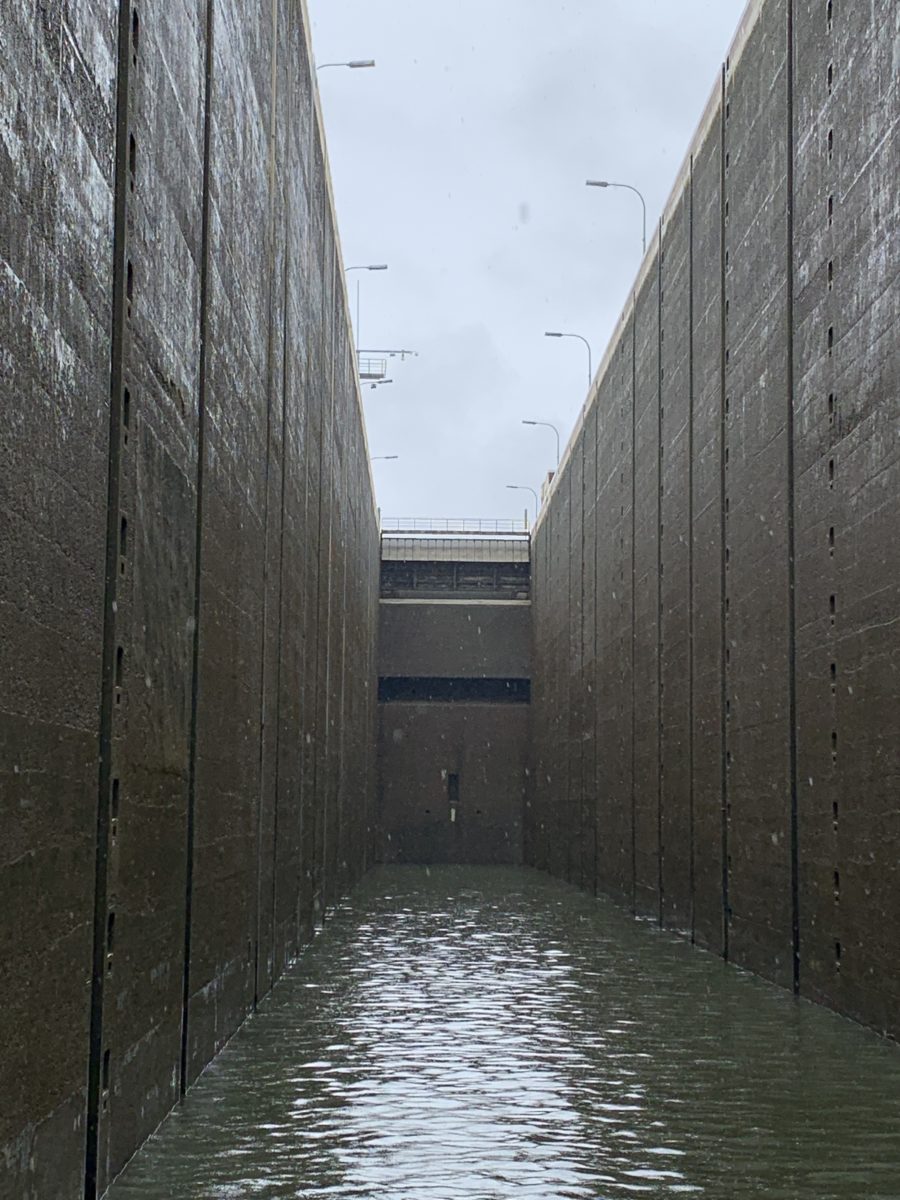
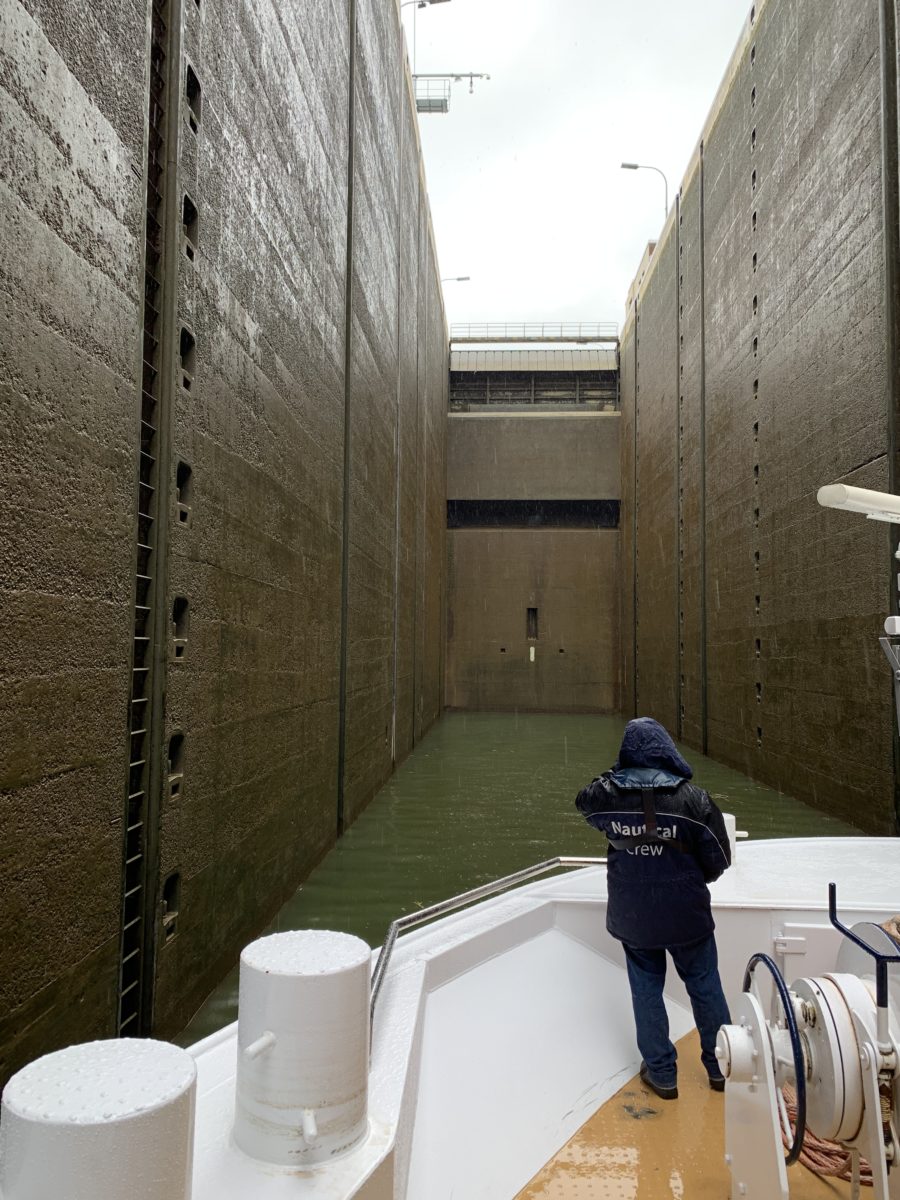
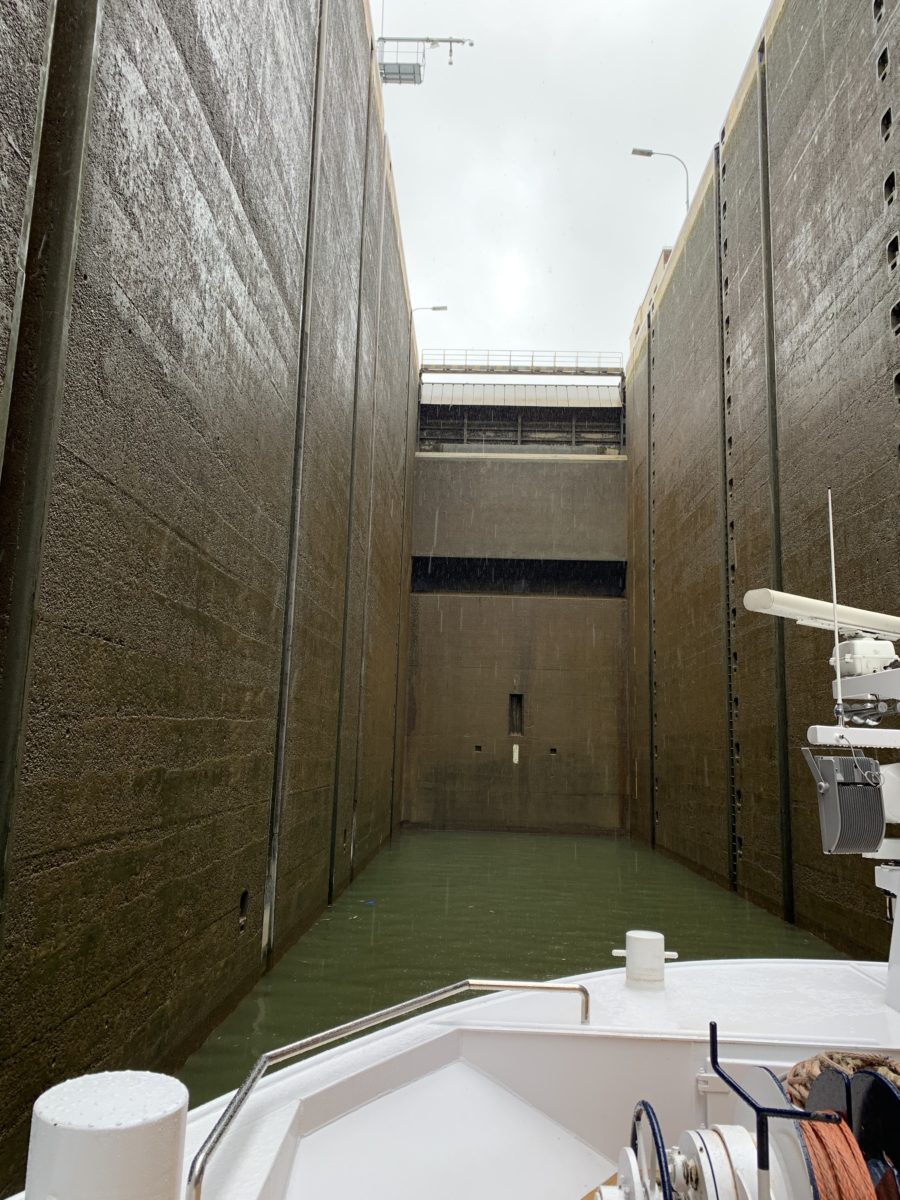

The boat ties up to these docking points that go up and down with the water. They make a huge screeching sound so they have only tied up to them on the downhill locks. If they got stuck on a solid one we’d be in trouble going down but the rope floats free when the water rises. Thankfully we didn’t have too many of these in the night
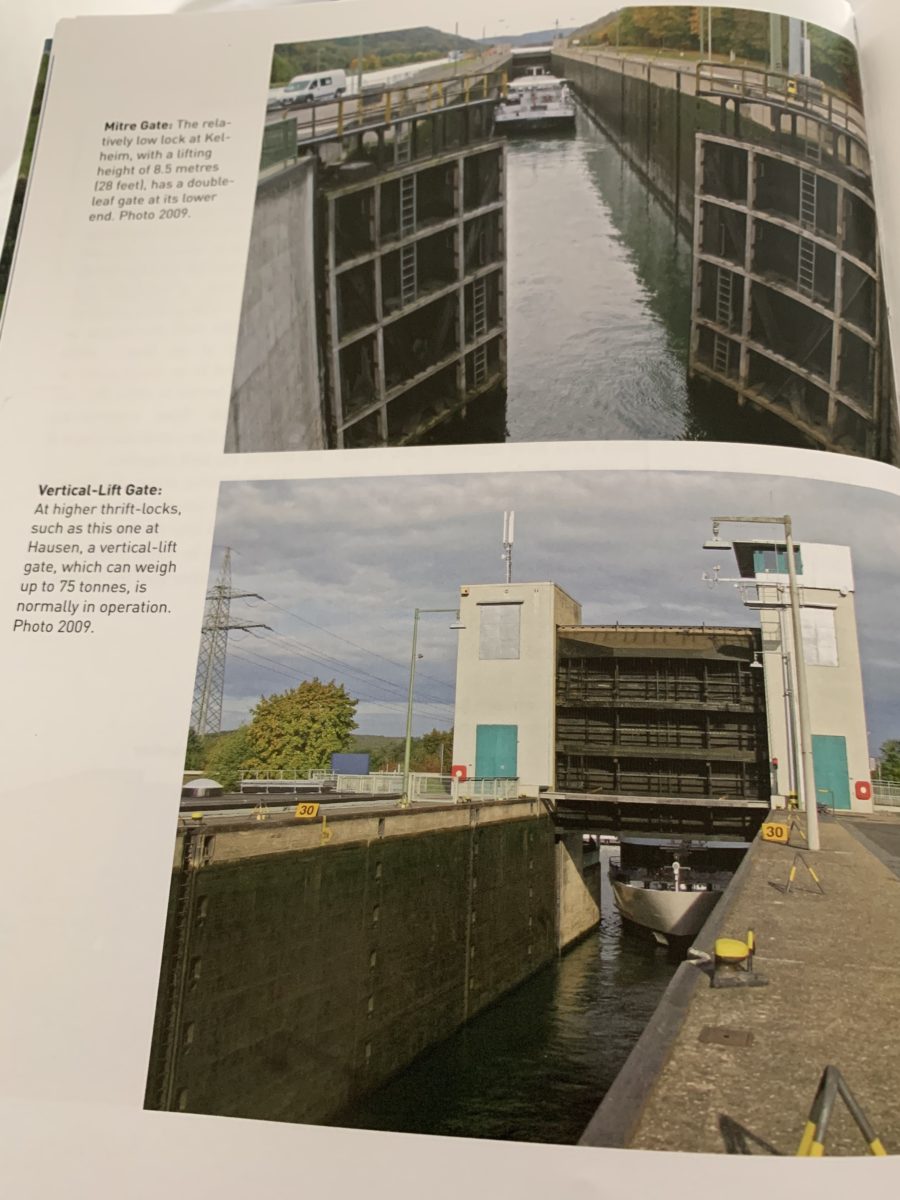
There have been locks on the Rhine and Main rivers but they mainly had normal push out gates. There would be a dam across the whole river but a small part at one side that would be a lock with gates across to let boats float up or sink down, depending on direction. In the canal the locks make up the entire width and are sometimes only a few kilometres apart. On this journey we go through a total of 66 locks.
The idea of joining the Rhine and Danube rivers was an ancient one and they first attempted it in 793, but the construction was inadequate. There is still evidence of that canal near Würzburg. A later canal was completed at huge cost in the mid 1840s but by the time it was completed there was competition from railways and the canal was never financially viable as it had a total of 100 locks. That canal is still evident in and around Nuremberg.
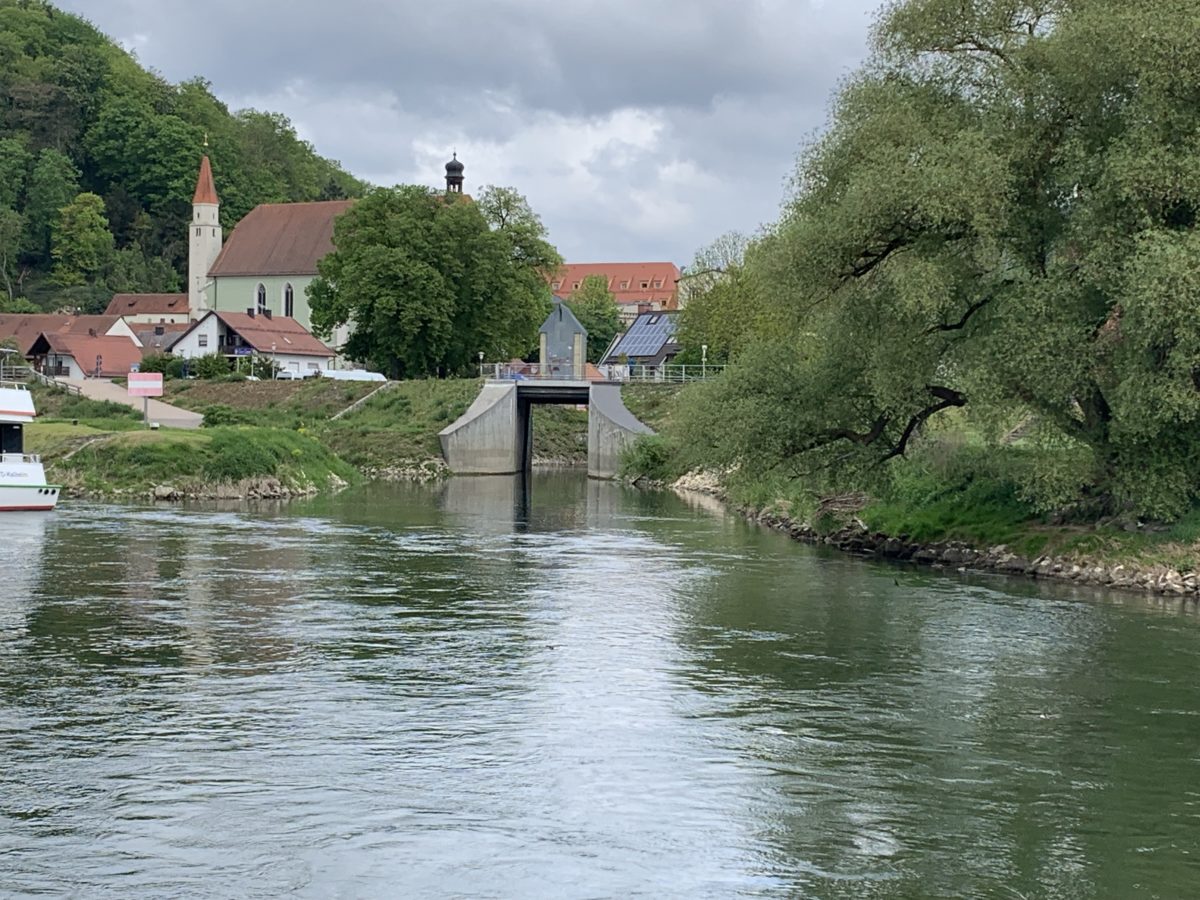
The present canal was completed in the 1970s and it has been hugely popular for riverboat cruising as it links Amsterdam and Vienna and Budapest. It is still economic to ship cargo along the canal because of the volumes that can be transported but only for certain types of bulk goods. Not for containers, because of height restrictions under many of the bridges, and not for goods that are produced to order, because of the time delay.
The locks were built to specific sizes with the gates being no bigger than the lowest bridges on the rivers. Thus we have had to have the sky deck closed and the ship’s bridge lowers right down. 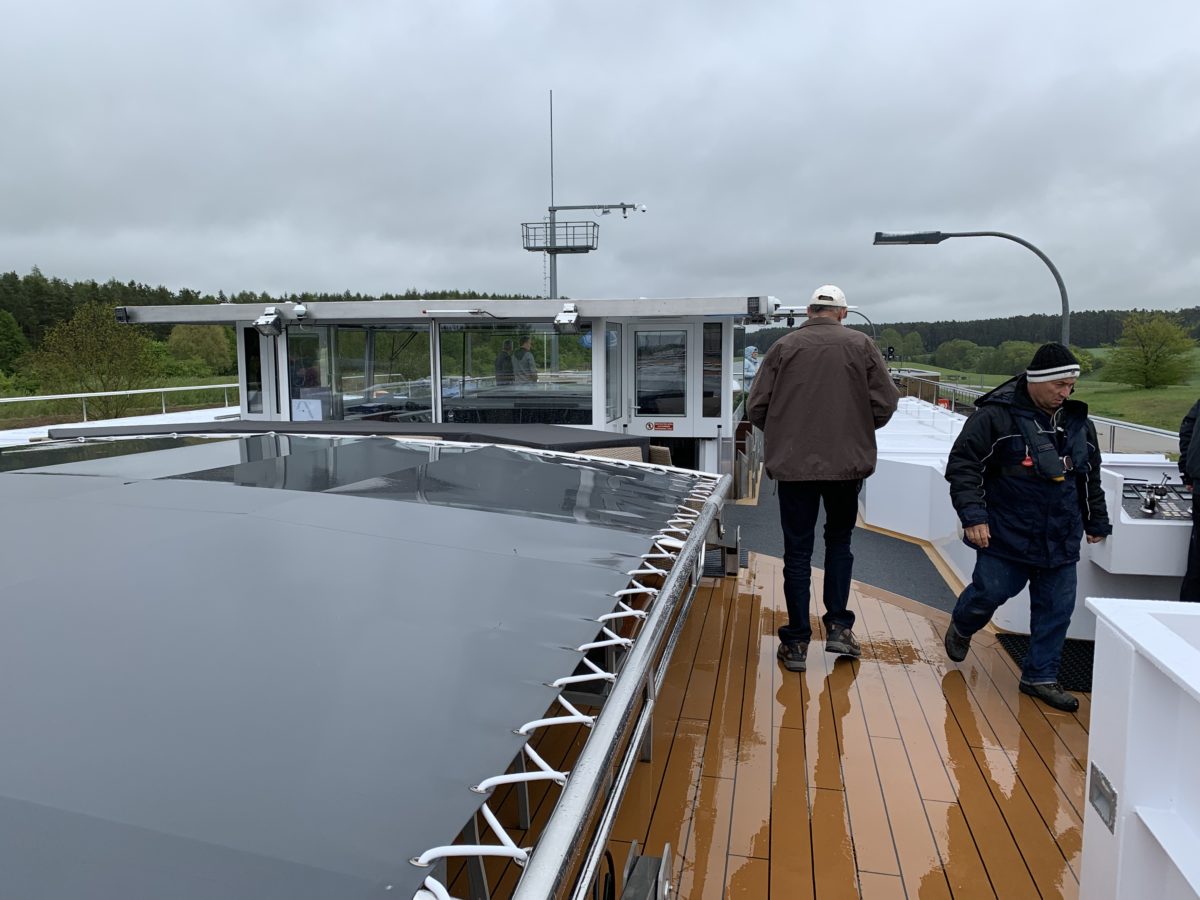
We had a talk on board by a university lecturer who was really clear and interesting. He explained the system of water storage tanks by the locks as there is no flowing source of water to fill the locks after use. Instead they have a reservoir into which water is pumped from the Danube and then a series of three storage tanks at each side of the locks. Each time the lock opens, it loses just 40% of its water with the rest coming from the storage tanks, which are themselves replenished when the locks close.
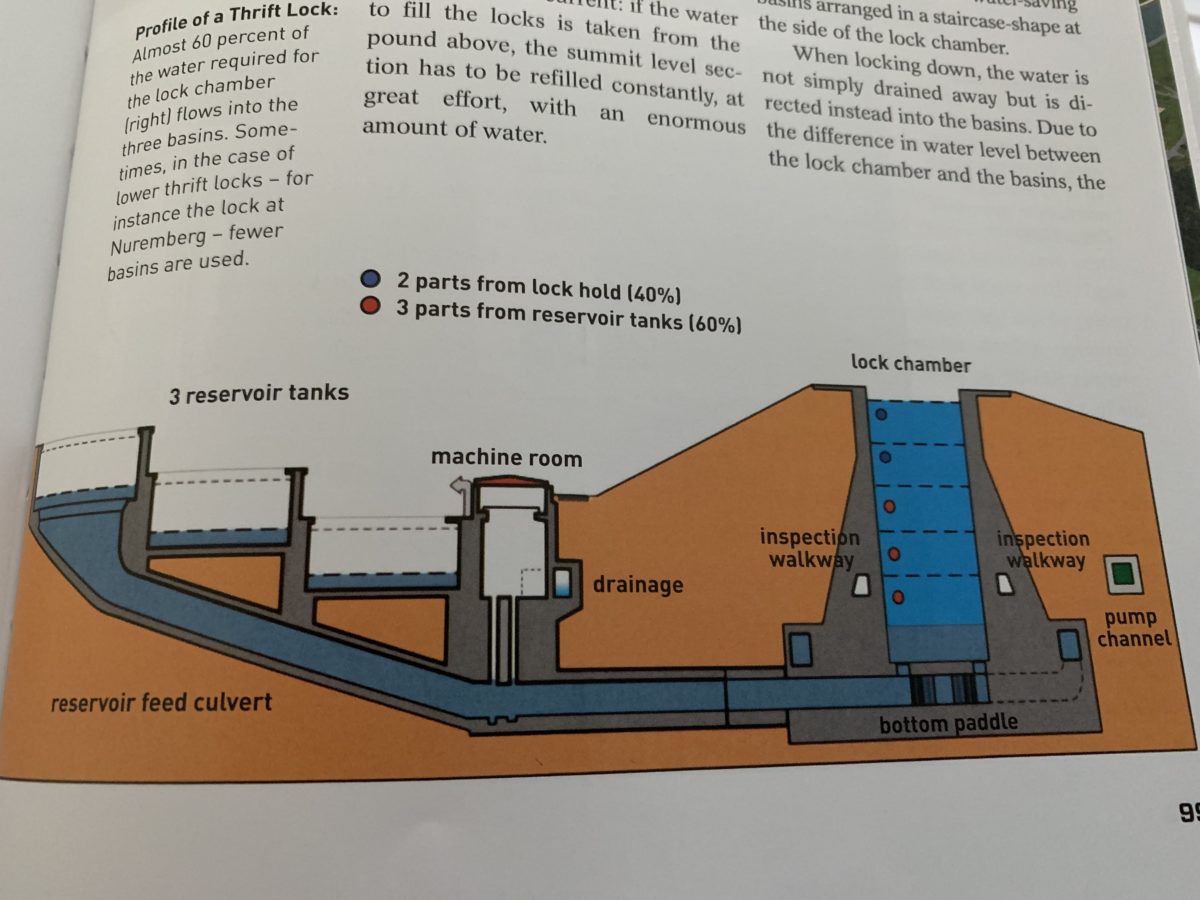 A very efficient engineering solution. He was selling his book, which we bought and some of my photos are from that.
A very efficient engineering solution. He was selling his book, which we bought and some of my photos are from that.
